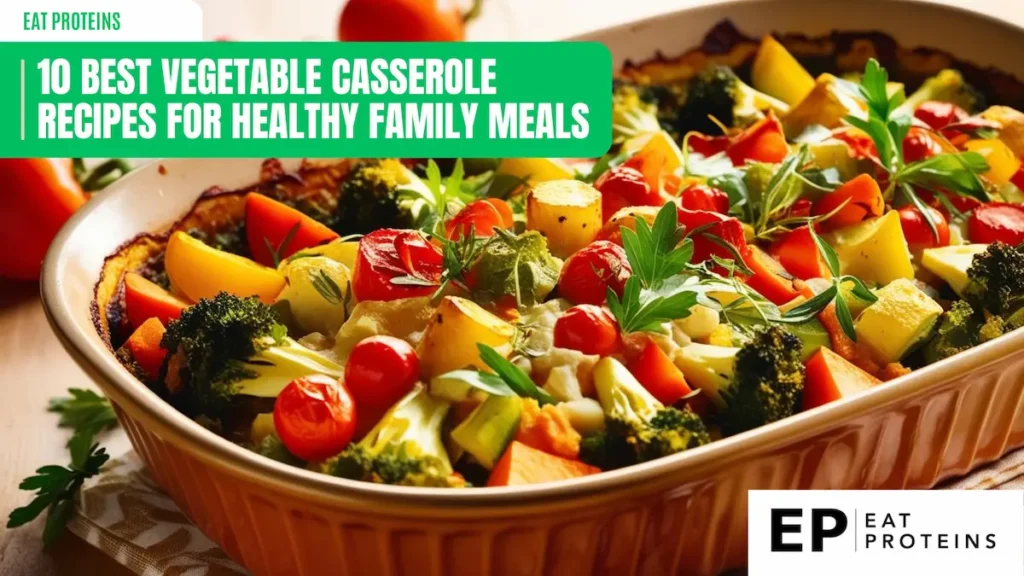
Vegetable casseroles are a fantastic way to enjoy healthy meals while also satisfying taste buds. They offer a versatile option for both weeknight dinners and special occasions. In this article, I will share the 10 best vegetable casserole recipes that are simple to make and packed with flavor.
Casseroles allow for creativity in the kitchen, combining a variety of vegetables, proteins, and grains. They are perfect for using up leftover ingredients and can easily be customized to suit personal preferences. Each recipe will provide a delicious way to incorporate more vegetables into my diet.
1. Baked Zucchini Casserole
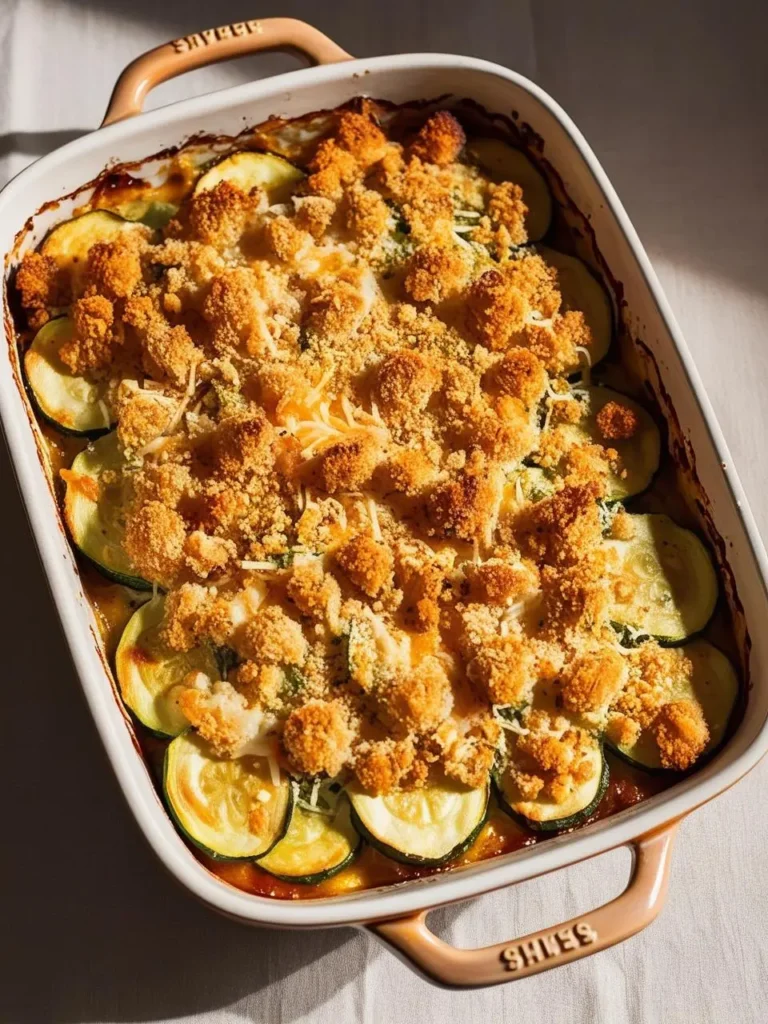
Baked Zucchini Casserole is a simple yet delicious dish that highlights the flavor of zucchini. It’s a great way to enjoy vegetables in a comforting form. This casserole is ideal for a quick family meal or as a side dish.
I find this recipe easy to make, even for beginners. It requires minimal prep and pantry staples. Plus, it takes about 15 minutes to prepare and 30 minutes to bake.
Here are the steps to make Baked Zucchini Casserole:
- Preheat your oven to 350°F (175°C).
- Slice 4 medium zucchinis and layer them in a greased baking dish.
- Mix 1 cup of shredded cheese, 1 cup of breadcrumbs, and a dash of salt and pepper.
- Sprinkle the mixture evenly over the zucchini.
- Bake for 30 minutes, or until the top is golden and the zucchini is tender.
This casserole is a great way to enjoy the health benefits of zucchini while satisfying your taste buds.
2. Cheesy Broccoli and Rice Casserole
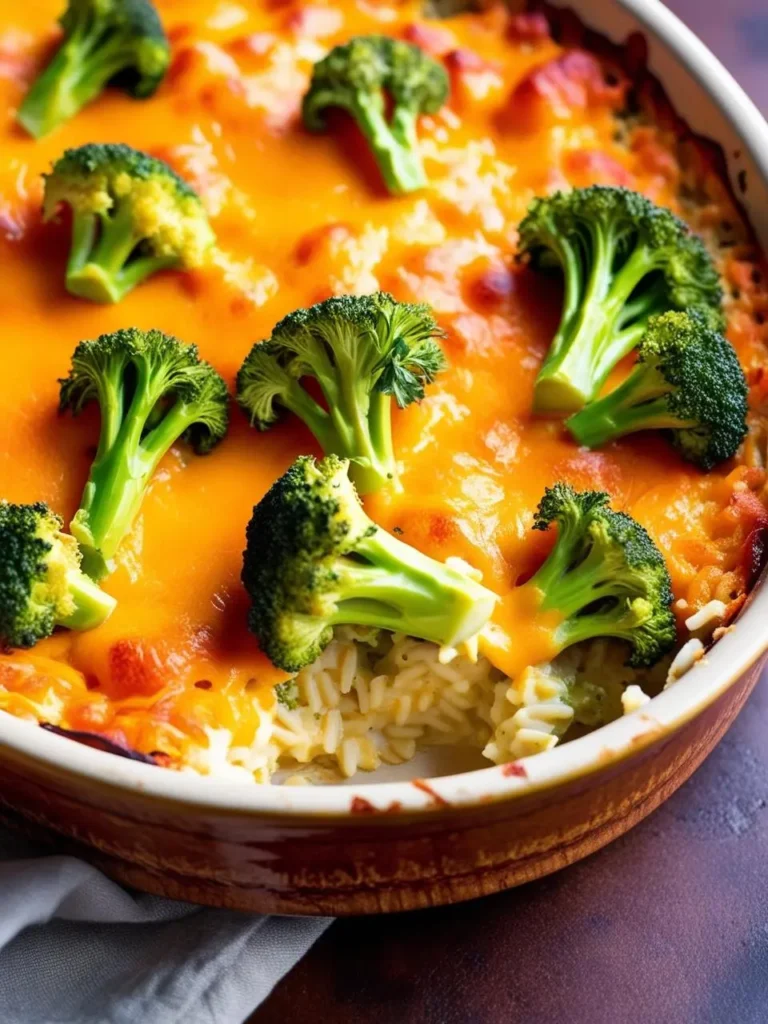
Cheesy Broccoli and Rice Casserole is a comforting dish that combines tender broccoli with creamy cheese and fluffy rice. This casserole is simple to prepare, making it a great choice for busy weeknights.
To make it, I start by cooking 1 cup of rice according to package instructions. While the rice cooks, I steam about 2 cups of broccoli until it’s tender.
Next, I mix the cooked rice and steamed broccoli in a large bowl. I add 1 cup of shredded cheese, such as cheddar, along with 1 can of cream of mushroom soup.
I stir everything together until it’s well combined. Then, I transfer the mixture to a greased baking dish. To enhance the flavor, I might sprinkle some extra cheese on top.
I bake the casserole at 350°F (175°C) for about 25-30 minutes or until it’s bubbly.
This dish is perfect as a side or a main meal, and it’s a great way to enjoy vegetables in a tasty format.
3. Sweet Potato Quinoa Casserole
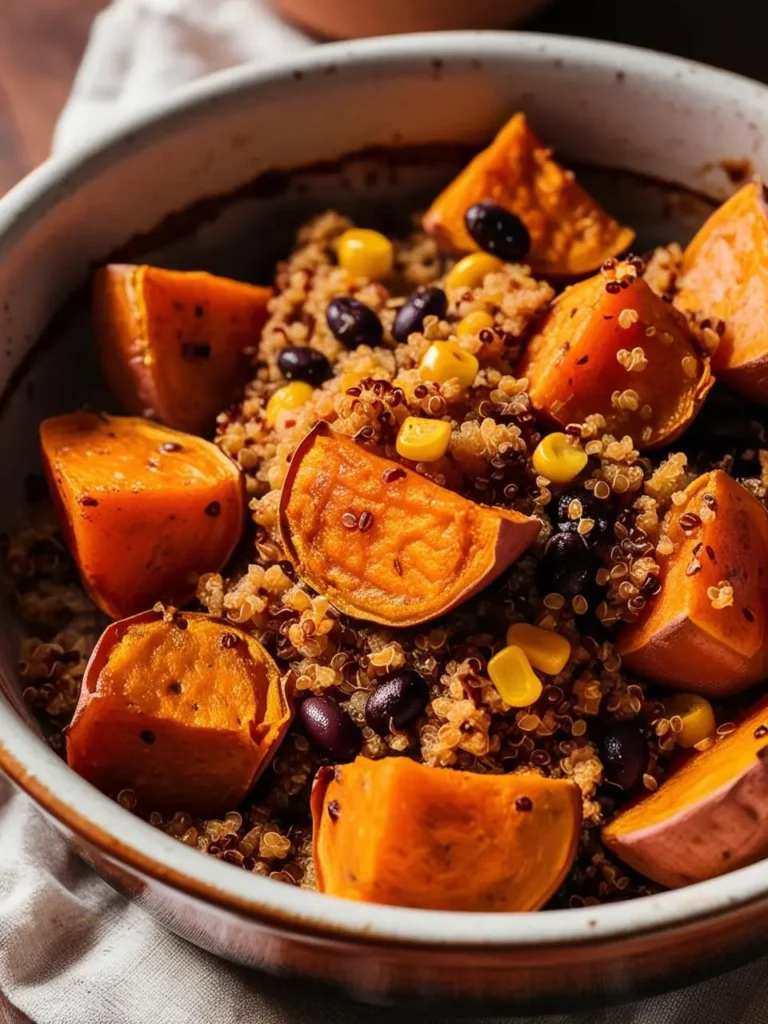
Sweet potato quinoa casserole is a flavorful dish packed with nutrients. Sweet potatoes provide natural sweetness and are high in vitamins. Quinoa adds protein and makes the dish filling.
Making this casserole is easy and straightforward. I usually spend about 15 minutes preparing and 30 minutes baking.
Here are the steps I follow:
- Preheat the oven to 350°F (175°C).
- Peel and chop 2-3 medium sweet potatoes, then boil them for about 10 minutes until soft.
- Cook 1 cup of quinoa according to the package instructions.
- In a mixing bowl, combine the cooked sweet potatoes, quinoa, 1 cup of black beans, and ½ cup of corn.
- Add 1 teaspoon of cumin and salt to taste.
- Transfer the mixture to a greased baking dish.
- Bake for 25-30 minutes until heated through.
I enjoy serving this casserole warm, and it pairs well with a side salad.
4. Cauliflower Cheese Casserole
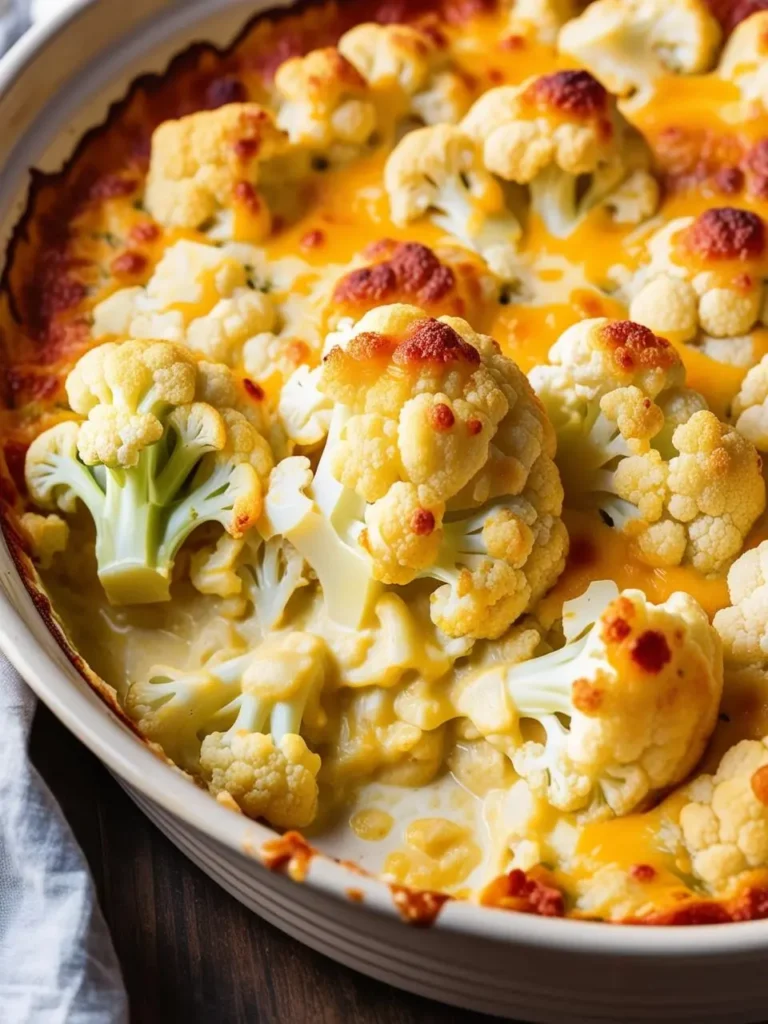
Cauliflower Cheese Casserole is a creamy dish that combines tender cauliflower with a cheesy sauce. It is a comforting and simple way to enjoy vegetables.
I find this casserole easy to make, even for beginners. It typically requires just a few ingredients: cauliflower, cheese, milk, butter, and some seasonings.
To prepare, follow these steps:
- Preheat my oven to 350°F (175°C).
- Cut the cauliflower into florets and steam them until tender, about 5-7 minutes.
- In a saucepan, melt 2 tablespoons of butter and stir in 2 tablespoons of flour to make a roux.
- Gradually add 2 cups of milk, stirring constantly until the mixture thickens.
- Mix in 2 cups of shredded cheese until melted.
- Combine the steamed cauliflower with the cheese sauce.
- Pour into a baking dish and bake for 20-25 minutes until bubbly and golden.
This recipe is perfect for a family dinner or a potluck. I enjoy it because it brings out the mild flavor of cauliflower while adding richness from the cheese.
5. Eggplant Parmesan Casserole
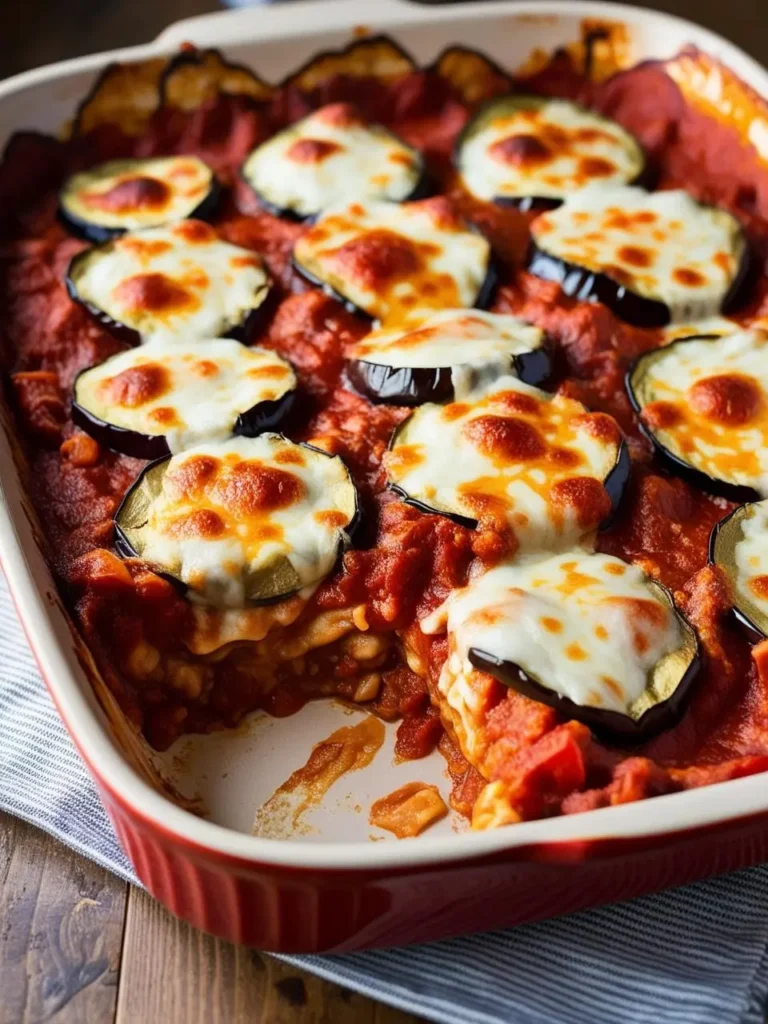
Eggplant Parmesan Casserole is a tasty vegetarian dish made with layers of eggplant, marinara sauce, and cheese. It’s a comforting meal perfect for family dinners.
Making this casserole is quite easy. I enjoy preparing it on weekends when I have some time to cook. The main steps include slicing the eggplant, baking it, and assembling the layers.
To start, I preheat the oven to 375°F (190°C). I slice two medium eggplants and sprinkle them with salt. After letting them sit for 30 minutes, I rinse and dry them.
Next, I bake the eggplant slices for about 20 minutes until they are slightly tender. While the eggplant is baking, I heat some marinara sauce in a pan.
Once the eggplant is ready, I start layering. I spread a little sauce in a baking dish, add a layer of eggplant, and then sprinkle mozzarella cheese on top. I repeat this process until all ingredients are used, finishing with cheese.
Finally, I cover the dish with foil and bake for 30 minutes. After that, I uncover it and bake for an additional 10 minutes until the cheese is bubbly and golden. The result is a delicious Eggplant Parmesan Casserole that I love to share.
6. Spinach and Artichoke Casserole
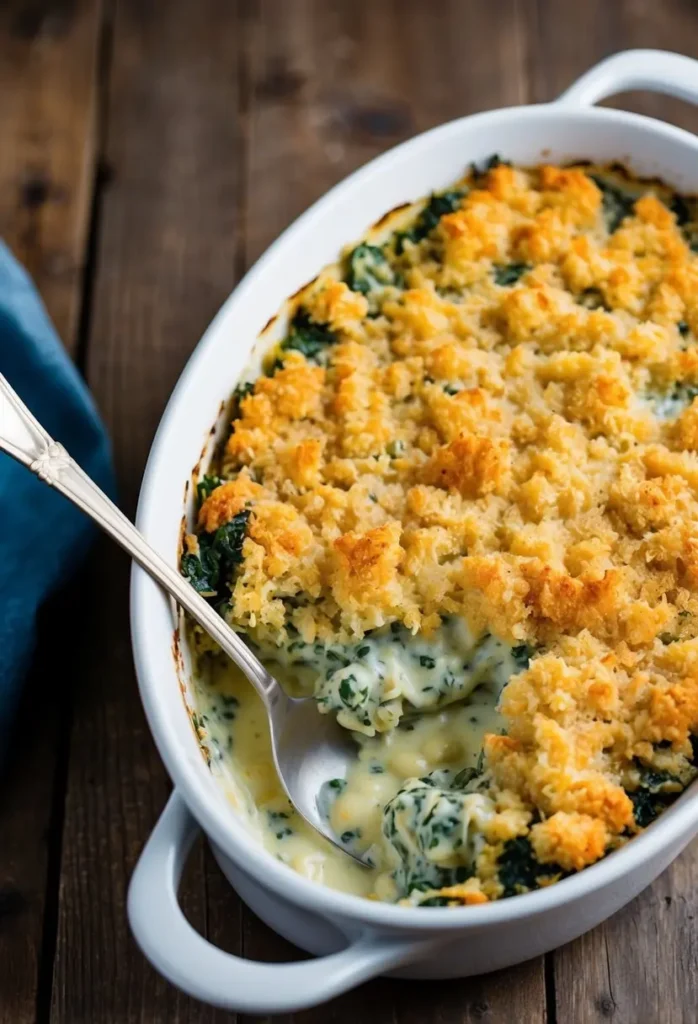
Spinach and artichoke casserole is a creamy, savory dish that combines tender spinach, flavorful artichokes, and rich cheeses. It’s a great way to enjoy vegetables while adding delicious taste.
I find this recipe easy to make, and it requires just a few simple ingredients. To cook, follow these steps:
- Preheat your oven to 350°F (175°C).
- In a bowl, mix together 1 cup of chopped spinach, 1 cup of artichoke hearts, and 1 cup of cream cheese.
- Add 1/2 cup of sour cream, 1/2 cup of grated Parmesan cheese, and season with salt and pepper.
- Transfer the mixture to a baking dish and top with 1/2 cup of shredded mozzarella cheese.
- Bake for about 25 minutes until bubbly and golden.
This casserole is satisfying and makes for a great side dish or main course. Enjoy it with a salad or some crusty bread for a complete meal.
7. Butternut Squash and Sage Casserole
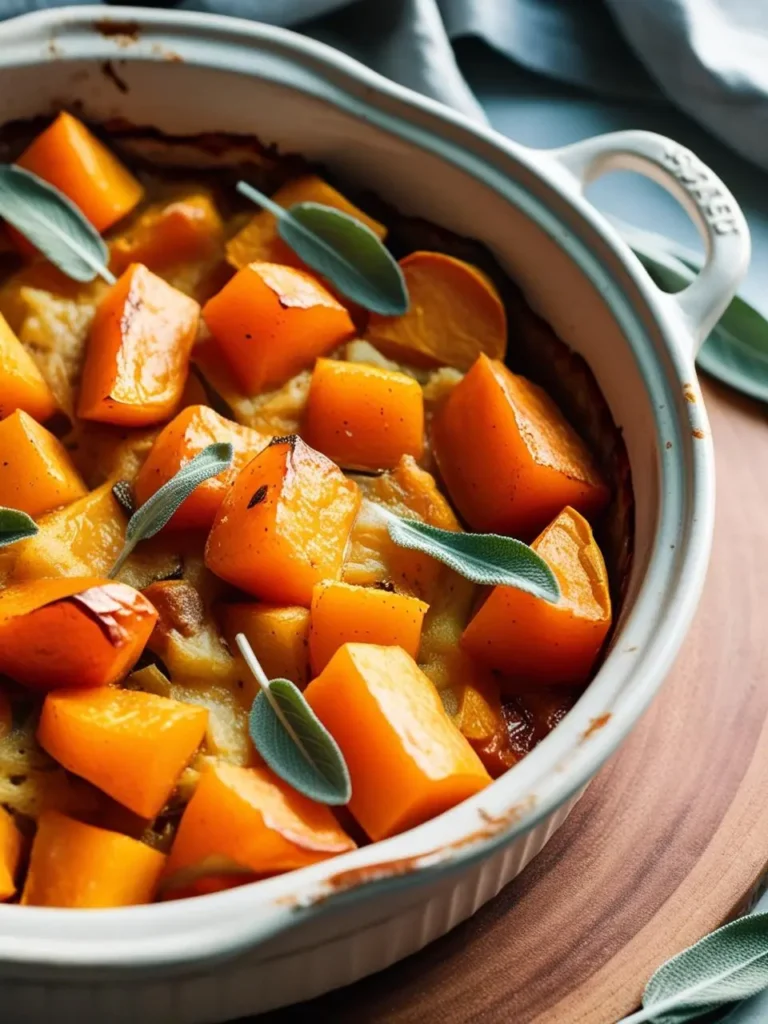
Butternut squash and sage casserole is a flavorful and comforting dish. It combines the sweetness of butternut squash with the aromatic taste of sage.
I find this casserole easy to make. It requires basic ingredients and simple steps. The preparation allows the ingredients to shine without overwhelming flavors.
To prepare, I start by preheating the oven to 375°F (190°C). Then, I chop 2 cups of peeled and cubed butternut squash. I mix the squash with 1 tablespoon of olive oil, salt, and pepper to taste.
Next, I add 1 tablespoon of fresh sage, chopped. This herb adds depth and enhances the squash’s flavor. I place the mixture in a baking dish and cover it with foil.
I bake the casserole for 30 minutes. After that, I remove the foil and bake for an additional 15 minutes until the squash is tender and lightly browned.
This casserole is perfect as a side dish or a main course. It’s a great way to enjoy seasonal vegetables and celebrate their natural flavors.
8. Green Bean Casserole with Almonds
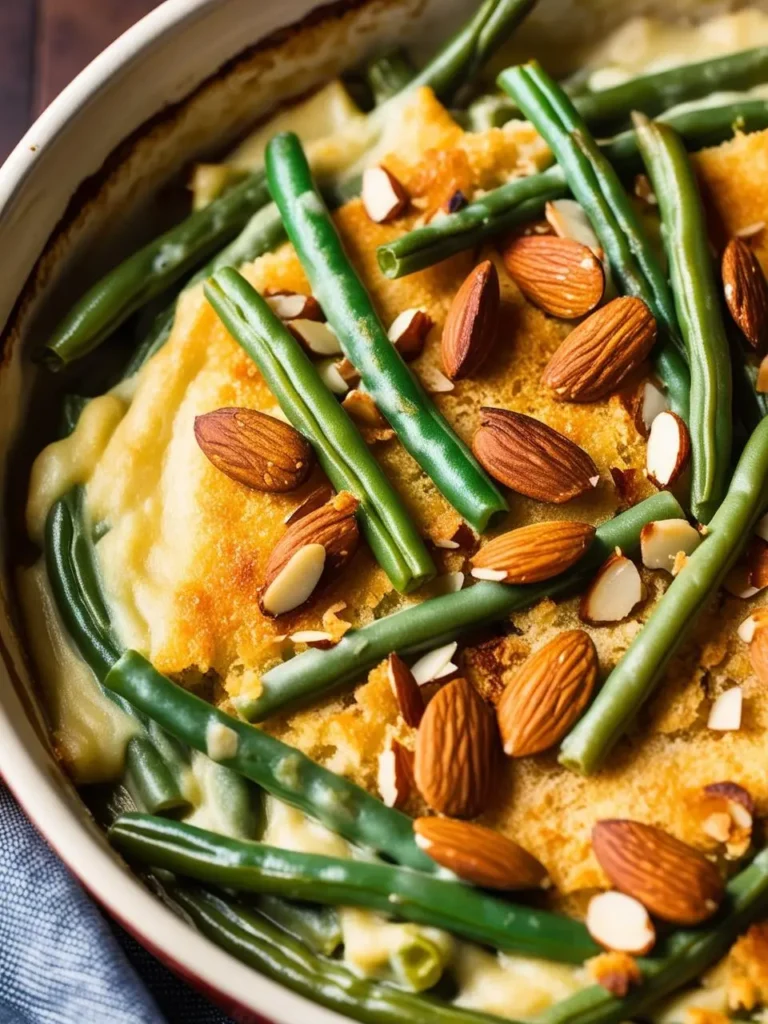
Green Bean Casserole with Almonds is a classic dish that combines fresh green beans with a creamy sauce and crunchy almonds. It’s a comforting and tasty option for any meal.
I find this recipe easy to make, perfect for cooks of all skill levels. It takes about 30 minutes to prepare and less than 30 minutes to bake.
To make this casserole, I follow these steps:
- Preheat the oven to 350°F (175°C).
- Cook 1 pound of fresh green beans until tender, then drain.
- In a bowl, mix 1 cup of cream of mushroom soup with ½ cup of milk.
- Stir in the cooked green beans and 1 cup of sliced almonds.
- Spread the mixture into a greased baking dish.
- Top with an additional ½ cup of almonds for crunch.
- Bake for 25-30 minutes, until bubbly and golden brown.
This dish is a great side for holiday meals or any family dinner. The combination of green beans and almonds adds both flavor and texture to my table.
9. Mushroom and Wild Rice Casserole
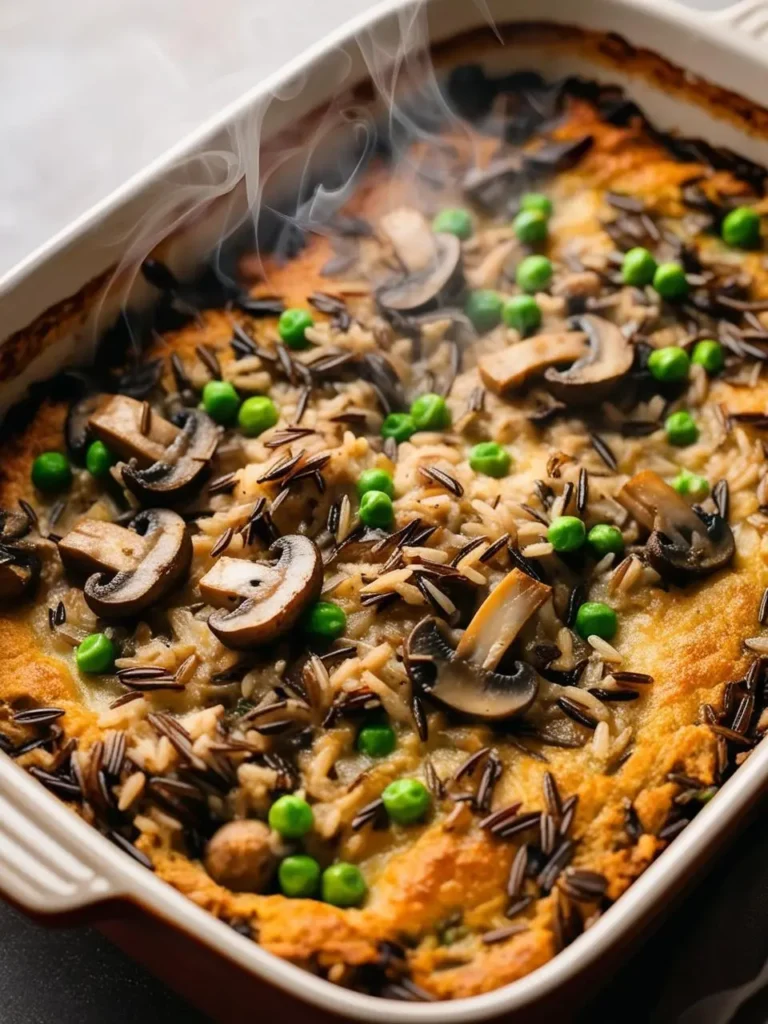
Mushroom and wild rice casserole is a flavorful dish that combines earthy mushrooms with nutty wild rice. It’s a great vegetarian option, full of textures and tastes.
I find this casserole easy to make, requiring simple ingredients and minimal prep. It’s perfect for weeknight dinners or as a side for gatherings.
To make this dish, I follow these steps:
- Preheat the oven to 350°F (175°C).
- In a skillet, sauté 1 chopped onion and 2 cups of sliced mushrooms in oil until tender.
- Add 1 cup of wild rice and 4 cups of vegetable broth. Bring to a boil.
- Transfer the mixture to a baking dish. Cover and bake for 45 minutes.
- Stir in 1 cup of frozen peas and let it bake for an additional 10 minutes.
This casserole is rich in flavor and nutrition. I enjoy serving it hot, allowing everyone to savor the combination of mushrooms and wild rice. It’s a comforting and filling option for any meal.
10. Tomato and Mozzarella Casserole
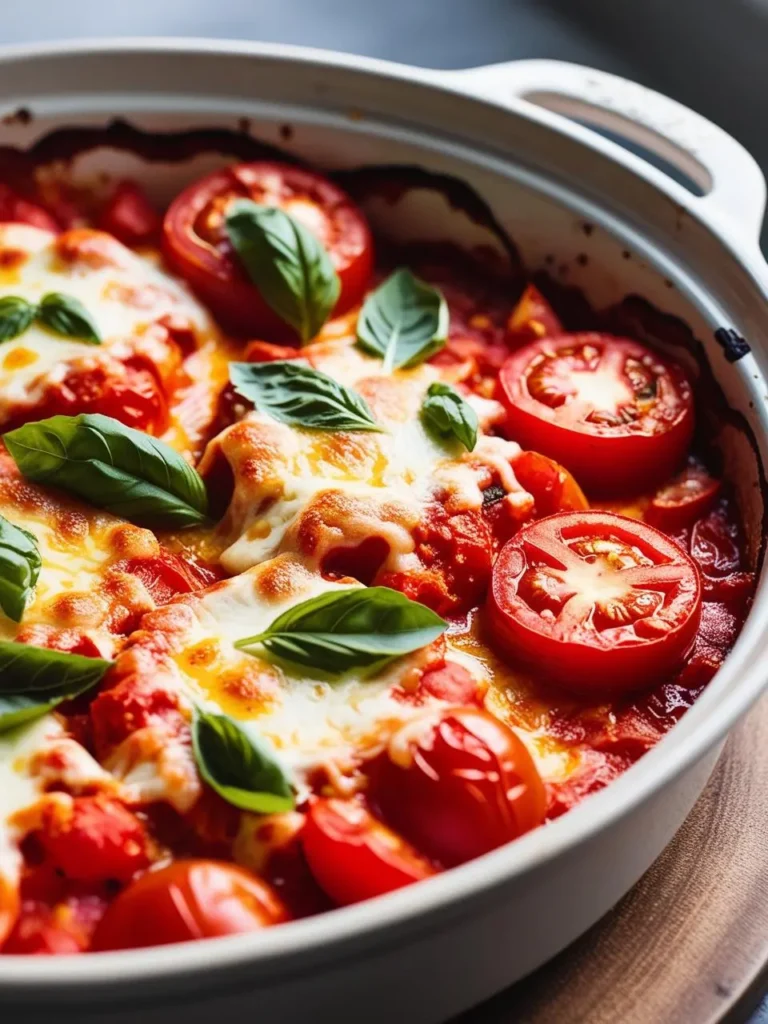
The Tomato and Mozzarella Casserole is a simple, tasty dish. It combines fresh tomatoes with mozzarella cheese, creating a comforting meal.
Making this casserole is easy and quick, perfect for any day of the week. I enjoy preparing this dish because it requires minimal ingredients and effort.
Here are the basic steps:
- Preheat the oven to 375°F (190°C).
- Slice 4-5 ripe tomatoes and layer them in a baking dish.
- Add 8 ounces of sliced mozzarella cheese on top of the tomatoes.
- Sprinkle with salt, pepper, and some fresh basil or oregano.
- Bake for 25-30 minutes until the cheese is bubbly and golden.
This casserole is great as a side dish or a main meal. I appreciate how fresh and flavorful it is, especially during the summer when tomatoes are in season. It’s a perfect way to enjoy fresh vegetables while keeping it simple.
What Are the Benefits of Vegetable Casseroles?

Vegetable casseroles are not just tasty; they also offer many great benefits. I find that they provide excellent nutrition, are easy to prepare, and work well for meal prep. Here’s a closer look at these advantages.
What Are the Nutritional Advantages of Vegetable Casseroles?
Vegetable casseroles can be packed with a variety of nutrients. They often contain vegetables like carrots, spinach, and bell peppers, which are rich in vitamins A, C, and K.
These vitamins support my immune system, vision, and bone health. Adding whole grains such as brown rice or quinoa increases fiber content, promoting good digestion.
By incorporating legumes like beans or lentils, I elevate the protein level, making the dish more filling. Thus, I can enjoy a meal that is balanced, delicious, and beneficial for my health.
How Are Vegetable Casseroles Easy to Prepare?
I appreciate how simple it is to make vegetable casseroles. Most recipes require minimal chopping and can be assembled quickly. I usually start by preheating the oven while preparing the ingredients.
Once everything is layered in a baking dish, I simply pop it in the oven. Many casseroles can be made in one dish, reducing cleanup time.
The preparation allows me to mix and match different vegetables based on what I have on hand. This versatility makes it convenient and fun to create new combinations each time.
Why Are Vegetable Casseroles Great for Meal Prep?
Vegetable casseroles are excellent for meal prep. I love making a large batch and storing individual portions in the fridge or freezer. This way, I have healthy meals ready to go for busy days.
They reheat well in the microwave or oven, maintaining their flavor and texture. It saves me time and helps me avoid unhealthy takeout.
Using casseroles as meal prep not only keeps my meals nutritious but also makes eating healthy easier. It allows me to enjoy homemade meals throughout the week, sticking to my dietary goals.
What Are Tips for Making the Perfect Vegetable Casserole?
Creating a perfect vegetable casserole involves careful planning and ingredient selection. From choosing the right vegetables to balancing flavors, each step is vital to achieving a delicious result. Here are some tips to guide you through the process.
How to Choose the Right Vegetables?
When selecting vegetables, I prefer to choose a mix that adds flavor, color, and nutrients. Leafy greens like spinach or kale pair well with hearty vegetables such as carrots and potatoes.
Key considerations:
- Seasonal Vegetables: Use what’s in season for the best flavor and freshness.
- Variety: Combine different textures and colors. This makes the dish visually appealing and nutritious.
- Cooking Time: Consider how long each vegetable takes to cook. Pre-cook firmer vegetables like potatoes to ensure everything cooks evenly.
By carefully picking your vegetables, I find that the casserole has a better taste and texture.
How to Balance Flavors and Textures?
Balancing flavors is crucial for a satisfying casserole. I like to mix sweet, savory, and even a bit of tang to create depth.
Tips for balance:
- Herbs and Spices: Fresh herbs like basil or thyme enhance the taste. I also include spices like garlic powder or paprika for an extra kick.
- Cheese: Adding cheese not only improves flavor but also adds creaminess. I recommend mixing different types, such as cheddar and mozzarella.
- Creaminess vs. Crunch: I often layer ingredients for a mix of creamy and crunchy textures. For instance, I use a crispy topping like breadcrumbs or nuts for added crunch.
This balance keeps each bite interesting and delicious.
Should You Use Fresh or Frozen Ingredients?
I often get asked about using fresh versus frozen vegetables in casseroles. Both have their benefits, but I prefer fresh for the best flavor.
Fresh Vegetables:
- More nutrients and taste.
- Best for dishes that will not be cooked for a long time.
Frozen Vegetables:
- Convenient and often just as nutritious.
- Quick to prepare and can save time.
If I use frozen vegetables, I make sure to thaw and drain them properly. This prevents excess moisture in the casserole.
What Are the Best Cooking Tools and Equipment for Vegetable Casseroles?
Having the right tools makes the cooking process smoother. Here’s what I find most helpful when preparing casserole dishes.
- Casserole Dish: A good-quality glass or ceramic dish retains heat well.
- Mixing Bowls: I use large bowls to mix all my ingredients thoroughly.
- Utensils: A sturdy spatula or spoon for stirring and even layering is essential.
- Cover: A lid or foil helps retain moisture during baking.
Using these tools, I’ve found that my casseroles bake evenly and come out perfectly cooked each time.
What Are Common Mistakes to Avoid with Vegetable Casseroles?
When preparing vegetable casseroles, certain errors can affect the taste and texture. I want to share key mistakes to watch out for while cooking. Avoiding these will help ensure successful and delicious casseroles.
How to Avoid Overcooking the Vegetables?
One common mistake I see is overcooking the vegetables. This can lead to mushy textures that ruin the dish. Many vegetables, like broccoli and carrots, should be slightly undercooked before baking.
This helps them retain some crunch and flavor. Blanching vegetables briefly before adding them to the casserole can be a great strategy. Just boil them for a couple of minutes, then place them in ice water to stop the cooking.
Remember, they will cook further in the oven, so it’s best to err on the side of crispness.
Why Is Using Too Much Liquid a Problem?
Another mistake I often make is adding too much liquid to my casserole. It’s important to balance the moisture levels. Too much liquid can lead to a watery casserole, which can make the dish unappetizing.
I usually recommend starting with a small amount of broth or milk. You can always add more if needed, but it’s tough to fix a watery dish.
Consider using ingredients like diced tomatoes or fresh veggies, which release moisture as they cook. This natural liquid helps keep the casserole flavorful without drowning it.
How Important Is Proper Seasoning?
Seasoning is crucial when preparing a vegetable casserole, yet it is often overlooked. I believe that bland casseroles can lack appeal. Using salt, pepper, and herbs elevates the flavor of the dish significantly.
I find it useful to season each layer as I assemble the casserole. This includes the vegetables, sauces, and toppings. Adding fresh herbs like basil or thyme enhances the overall taste.
Don’t forget to taste as you go, adjusting the seasonings based on your preferences to achieve a well-balanced flavor.
Why Is Cooking Time and Temperature Important?
Finally, I have learned the importance of cooking time and temperature. Ignoring these can result in unevenly cooked casseroles. I always set my oven to the recommended temperature for the recipe, usually around 350°F (175°C).
Using a timer is also a helpful tool. Casseroles typically need about 30 to 45 minutes, but it’s vital to check for doneness. If the top is browning too quickly, I may cover it with aluminum foil.
This ensures that the vegetables cook thoroughly without burning. Keeping track of time and temperature enhances the chances of a perfect casserole.
